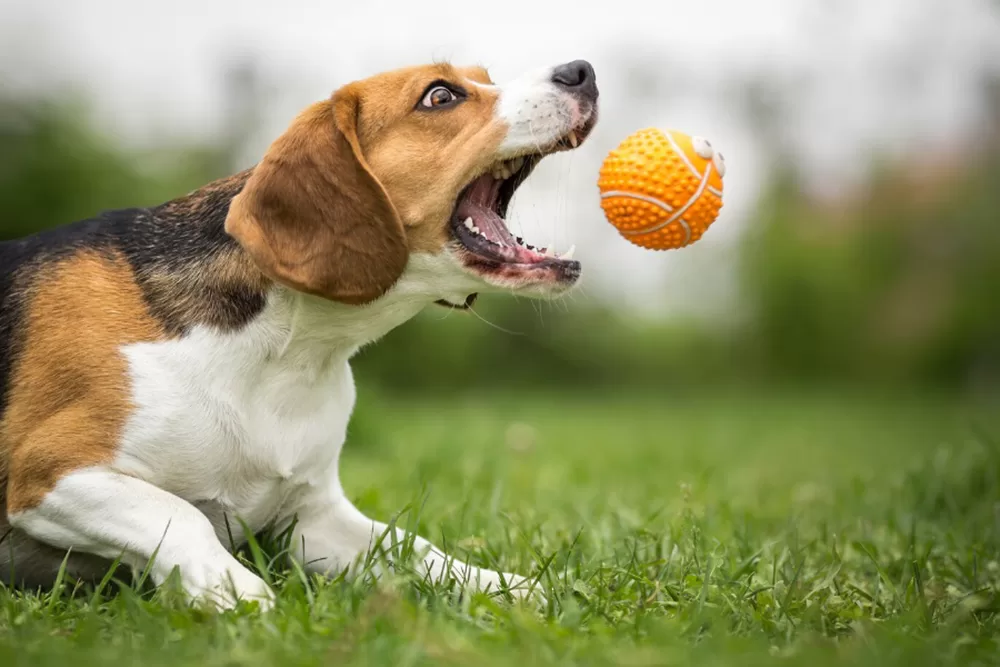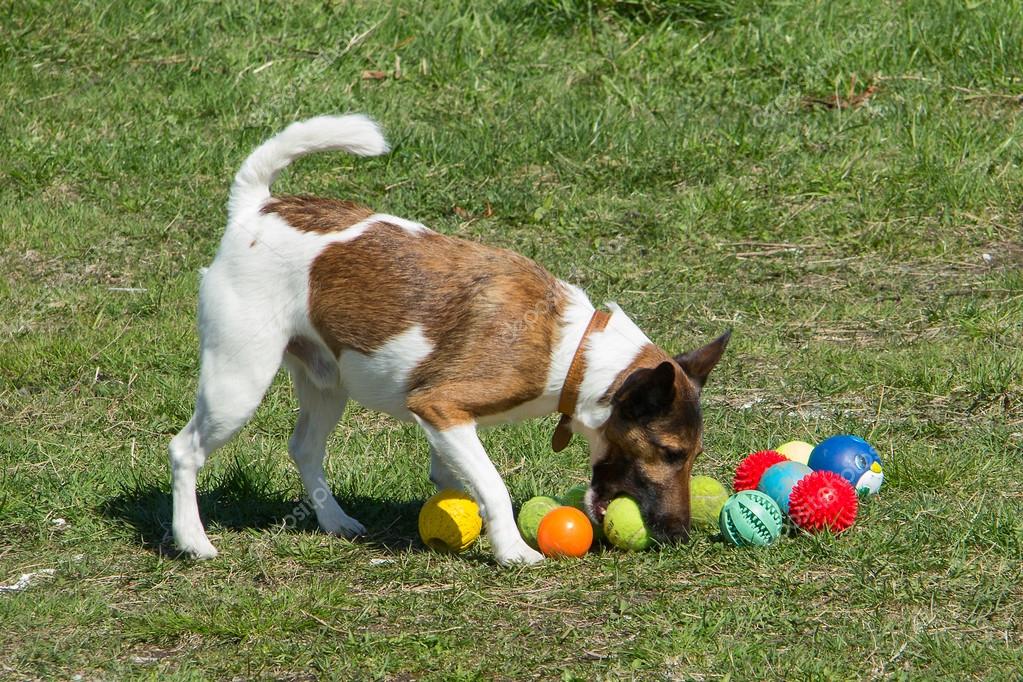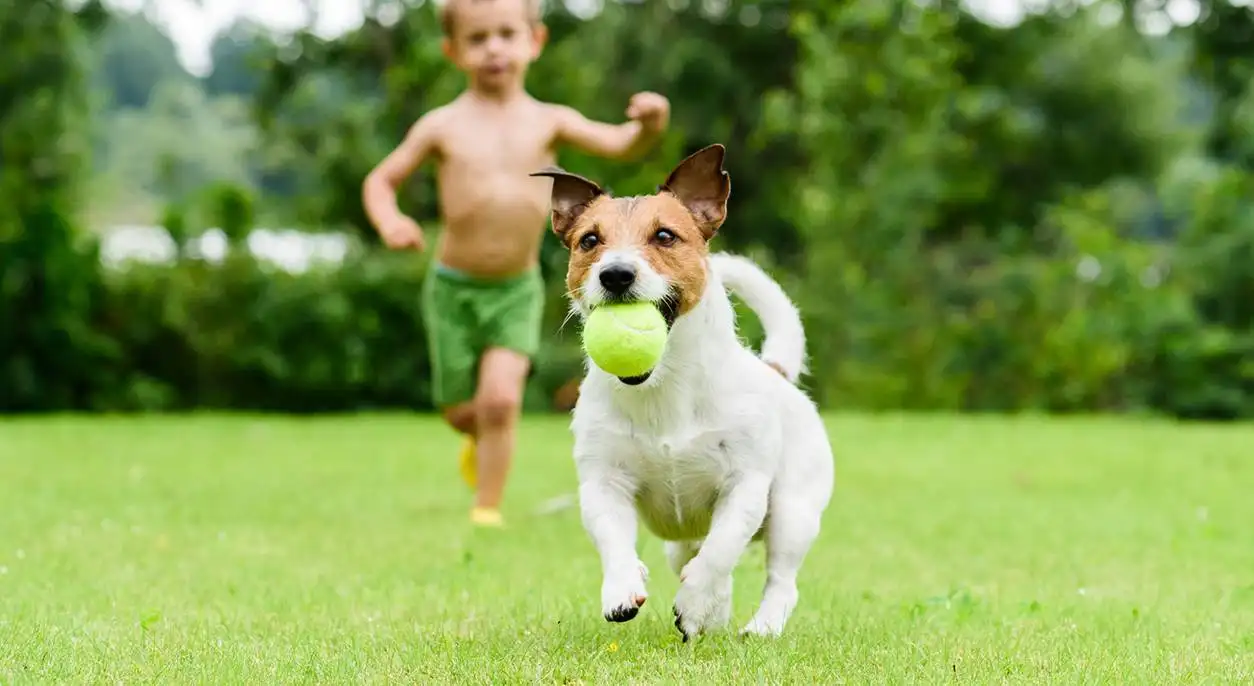As a dog-loving family, you must be concerned about keeping your dog healthy and happy. Among them, playing with balls is one of the favorite games for dogs. However, how to teach your dog to play with a ball and how to choose the right toy ball for your dog may be confusing to some dog owners. In this article, I will give you detailed steps and tips on how to teach your dog to play ball and share the knowledge on how to choose the right toy ball for your dog so that your dog can enjoy playing ball in a healthy and happy way.

Why is It Important to Let Your Dog Play With a Ball?
First of all, playing with a ball can help dogs exercise. Dogs in the process of chasing, biting, and catching the ball, need to run, jump, turn, and do other actions, these actions can exercise the dog’s muscles and bones, enhance their physical fitness and endurance, and help prevent some diseases.
Second, playing with the ball can improve the dog’s intelligence and reaction ability. Dogs need to constantly observe, judge, and react in the process of chasing and catching the ball, which can help dogs improve their intelligence and reaction ability, making them smarter and more resourceful.
In addition, playing with a ball can also improve your dog’s social skills. If you go to the park or a dog party with your dog, you will find that many dogs like to play with balls. You can then organize a game with other dog owners and let your dog play with other dogs, which will allow your dog to build a friendly relationship with other dogs and improve their social skills.
In short, letting your dog play ball not only helps them exercise and improve their intelligence and reflexes but also improves their social skills and makes them healthier and happier.
What are the Benefits of Dogs Playing With Balls?
Physical Fitness
Muscle and Bone Exercise: In the process of chasing, biting, and catching the ball, dogs engage in activities like running, jumping, and turning. These actions exercise your dog’s muscles and bones, enhancing their physical fitness and endurance, and can help prevent certain diseases.
Cognitive Development
Boosting Intelligence and Reflexes: Playing with balls requires dogs to constantly observe, judge, and react. This process helps improve their intelligence and reaction ability, making them more alert and resourceful.
Emotional Well-being
Social Skills and Happiness: Playing with balls can increase your dog’s happiness and help relieve their stress and anxiety. Additionally, when dogs play ball in parks or at dog parties, it provides them an opportunity to socialize, improving their social skills.
How to Get Dogs Interested in Balls?
Getting a dog interested in a ball is a very simple and fun task. Perhaps the following methods can help you.
- Stimulate your dog’s curiosity: Place a ball, either a soccer ball or tennis ball, within your dog’s line of sight. When your dog approaches the ball curiously, you can give a reward, such as your dog’s favorite snack or toy.
- Use sounds and actions: When your dog approaches the ball, you can use sounds and actions to get his attention, such as talking or gently clapping your hand. These sounds and actions will stimulate your dog’s curiosity and make him more interested in the ball.
- Progressive: Gradually increase your dog’s interaction with the ball, for example by letting your dog take the ball out of your hand or by letting your dog try to catch the ball with his mouth. By gradually increasing the difficulty, you can make your dog more interested and enjoy the process.
- Develop your dog’s interest: When your dog starts to develop an interest in the ball, you can reinforce his interest by playing with it several times. You can play simple games such as tossing and catching the ball, or take your dog to the park with you to play.
- Give rewards: It is important to give rewards to your dog when he does well. You can use your dog’s favorite treats or toys to encourage him and show him that he is very welcome for his performance.
How to Choose the Right Toy Balls for Dogs?
Based on Breed and Age
Size and Durability: Different breeds and ages of dogs require different types of toy balls. For instance, small dogs might need smaller balls, while larger breeds require sturdier ones. Older dogs might benefit from softer balls to protect their teeth and gums.
Balls Tailored to Personality and Activity Level
Stimulation and Comfort: Some dogs are very active and might need balls that offer more challenges, like bouncing balls or those with unique patterns. In contrast, calmer dogs might prefer softer balls like rubber or cotton ones.
Safety Considerations
Material and Standards: The material of the toy ball plays a crucial role in the dog’s play experience. It’s essential to choose balls that are durable and free from toxic substances. Ensuring that the toy ball meets international safety standards is also vital for your dog’s well-being.
Before you buy, you can consult a professional for advice to ensure that you choose a safe, healthy, challenging, and stimulating toy ball for your dog.
The Size and Material of the Ball on the Impact of the Dog
Choosing the right toy ball is important for your dog’s health and safety. Paying attention to the size and material of the ball can help you choose the right toy ball for your dog and ensure that your dog can have fun while playing without getting hurt.
- Size: The size of the toy ball should match the breed and size of your dog. If the ball is too small, the dog may accidentally eat it or get it stuck, resulting in choking or digestive tract blockage. And if the ball is too big, the dog may not be able to bite or throw the ball. Therefore, it is very important to choose the right size and caliber of the ball for your dog.
- Material: The material of the toy ball is also very important. For example, some dogs like to chew things, if the toy ball material is not durable enough, it may be quickly chewed or broken by the dog. This can bring danger and injury to the dog. In addition, different materials can also affect the dog’s sense of smell and taste experience. For example, some dogs like to play with flexible rubber balls, while others like to play with soft fuzzy balls.

How to Avoid Dogs Chewing Bad Balls?
It’s a very common thing for dogs to chew on bad balls, but there are ways to help avoid this.
- Choose a durable toy ball: Some toy balls may not be durable enough and can easily be chewed by dogs. So when buying a toy ball, you should choose something durable and sturdy, such as a rubber ball or a hard plastic ball.
- Supervise your dog’s play: When your dog is playing, you should always supervise its behavior. If the dog begins to chew the toy ball, it should be stopped in time to guide the dog to the correct behavior. If the dog continues to chew the toy ball, you should stop letting it play with this toy ball so that the dog does not accidentally eat it or get injured.
- Provide a variety of toys: If you provide your dog with only one toy ball, it is easy for your dog to focus on the ball and chew it more often. So you should provide your dog with a variety of different toys to give your dog more choices and variations.
- Provide your dog with enough exercise and activity: Dogs sometimes chew on toy balls because they lack enough exercise and activity, and chewing on them releases their energy and stress. Therefore, providing your dog with enough exercise and activity on a regular basis can reduce the likelihood of your dog chewing on a toy ball.
In short, avoiding your dog from chewing on a toy ball requires constant attention and effort. Choosing the right toy ball, supervising your dog’s play, providing a variety of toys, and giving your dog plenty of exercise and activity are all ways to help reduce the incidence of your dog chewing on a toy ball.
How to Train Your Dog to Bring the Ball Back?
Having your dog learn to bring the ball back is a very useful training exercise that can help make playtime more fun and interactive.
- Use the guide method: First, use a leash firmly tied to the dog, and then throw the ball to the appropriate distance in front of the dog, when the dog bites the ball, immediately use the guide method to recall the dog. When the dog returns to you, point your finger to your side and say “Come back” to give the dog a command. When the dog returns to you, reward him and his pet and praise him to increase his motivation for this behavior.
- Use command and reward: Once your dog has learned to bring the ball to you, start using a command, such as “Bring it”. Each time you throw the ball, use the command to call your dog back to you and reward him immediately when he returns to you to increase his motivation for the behavior.
- Increase the difficulty and distance: Once the dog has gradually mastered the skill of bringing the ball back, you can increase the difficulty and distance, such as letting the dog bring the ball back at a greater distance or letting the dog bring the ball back in the presence of interference. This will allow the dog to gradually adapt to different environments and situations, and enhance the dog’s skills.
- Consistent training: Training your dog to bring the ball back requires continued patience and persistence. Training daily for a period of time and gradually increasing the difficulty and distance of the training will allow the dog to gradually master this skill.
In short, training your dog to bring the ball back requires patience and persistence, and gradually increasing the difficulty and distance, along with rewards and praise, can enhance your dog’s motivation and drive and make your dog more willing to participate in training.
How to Train Your Dog to Catch a Thrown Ball?
The followings are some steps and tips to help train your dog to catch a thrown ball:
- Determine the correct ball and location: First, choose a ball that is appropriate for your dog’s palate and size, and train in a safe and spacious space. Make sure you and your dog are standing on a flat surface to prevent injury.
- Use proper posture: When you are ready to throw the ball, use the correct posture, such as standing or crouching so that the ball can fly in a straight line. Also, hold the ball in one hand and press the dog’s collar or chest with the other hand to prevent the dog from jumping up or leaving the designated area.
- Throw the ball and give commands: When you are ready, throw the ball with appropriate force and call out commands such as “catch” or “grab” as the ball leaves your hand. This lets the dog know where the ball is and what needs to be done.
- Reward and praise: When your dog successfully catches the ball, reward and praise him immediately. You can use a treat or toy as a reward, or praise the dog with some words of encouragement. This lets the dog know that he is doing a great job and encourages him to continue learning the skill.
- Gradually increase the difficulty: Once your dog has mastered the basic catching skills, you can gradually increase the difficulty, such as the distance and speed of throwing the ball. This can help your dog gradually improve his skills and reflexes.
- Continuous training: Training your dog to catch a ball requires continuous patience and persistence. Short sessions of daily training and gradually increasing the difficulty and distance will allow your dog to gradually master this skill.
In short, training your dog to catch a thrown ball requires patience and persistence, and gradual progress, along with rewards and praise, can make your dog more willing to participate in training and improve its skills and reflexes.
How to Let Dogs Play Ball Outdoors?
Getting your dog outside to play with a ball is a fun and rewarding activity that can promote exercise and health.
- Choose a suitable location: First, choose a spacious, flat, and safe outdoor space. Avoid playing with the ball on a busy street or in a crowded park, which may be unsettling or distracting to your dog.
- Choose the right toy ball: Choose a toy ball that is suitable for your dog’s taste and size, and make sure it is made of a durable and easy-to-clean material.
- Let your dog warm up: Before you start playing with the ball, let your dog do a proper warm-up activity, such as jogging or walking, to help prepare his body and muscles.
- Start playing with the ball: When the dog is ready, throw the ball with appropriate force and call out commands such as “catch” or “hold”. Have the dog chase the ball and bring it back, then immediately reward and praise, such as a treat or toy. Gradually increase the difficulty and distance so that the dog’s exercise gradually increases.
- Be safe: When playing with the ball outdoors, be safe. Make sure your dog is in your line of sight at all times and avoid exposing your dog to dangerous objects or areas. Also, pay attention to weather conditions and avoid playing with the ball in weather that is too hot or too cold.
- End the game: When your dog starts to feel tired or disinterested, end the game at the right time and let your dog rest. Also, put the toy ball back in a safe place and clean and replace the ball regularly.
In short, letting your dog play with a ball outdoors requires choosing the right location and toy ball, allowing your dog to perform proper warm-up activities, paying attention to safety, and ending the game at the right time.
The Impact of Ball Games on the Intellectual and Psychological Development of Dogs
Ball games can help dogs develop intelligence and adaptability while enhancing the bond and trust between dog and owner. This has a positive impact on a dog’s mental health and well-being. Therefore, it is recommended that owners accompany their dogs to play the ball more often and give appropriate rewards and praise to enhance their interest and motivation.
- Intellectual development: Ball games can help dogs develop cognitive and thinking skills. For example, when you throw the ball, your dog needs to chase and catch it, which can help him develop hand-eye coordination and spatial awareness. In addition, when you let your dog play with a ball in different environments, such as indoors or outdoors, he needs to adapt to different situations and learn how to respond to different challenges. This can help dogs develop intelligence and adaptability.
- Psychological development: Ball games can also promote your dog’s psychological development. For example, when you interact with your dog, such as playing ball together, this can build a closer relationship and enhance their trust and dependence on their owner. Also, playing with a ball can boost your dog’s self-confidence and self-assurance because it feels a sense of accomplishment and satisfaction when it successfully catches the ball. These factors can promote a dog’s mental health and well-being.

Conclusion
This article is about how to teach your dog to play with the ball, how to choose the right toy ball for your dog, and so on. We hope it will be helpful to you. We are a professional polyurethane toy ball supplier, support wholesale and customization, interested friends can always contact us.

